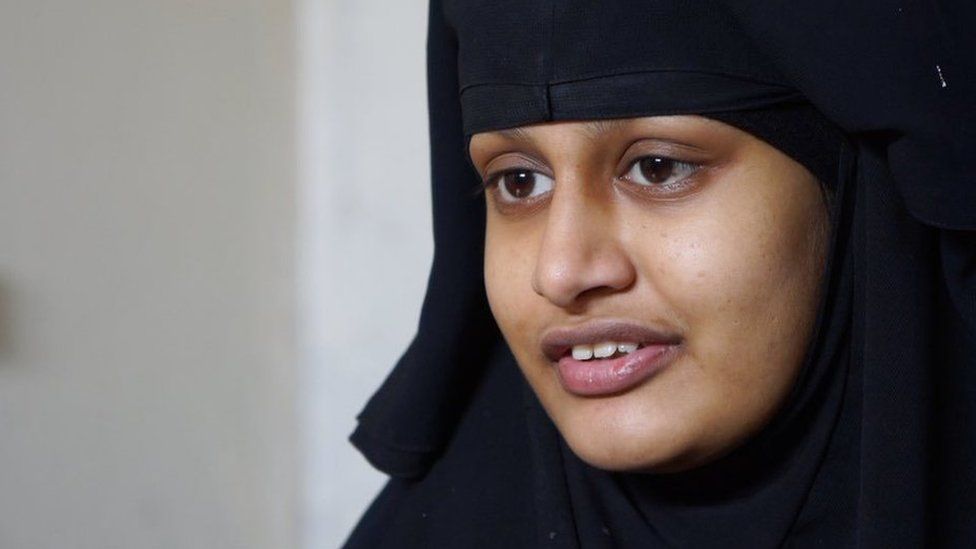 By Dr. Haezreena Begum binti Abdul Hamid
By Dr. Haezreena Begum binti Abdul Hamid
She is a Criminologist and a Senior Lecturer of Faculty of Law, Universiti of Malaya. Dr. Haezreena obtained her PhD in Criminology from the Victoria University of Wellington, New Zealand.
Human trafficking is a serious human rights violation and a complex cross-border crime with far-reaching impacts. Several United Nations Security Council Resolutions underscore the concern that terrorist groups profit from human trafficking, notably through four types of trafficking; sexual exploitation, forced recruitment, slavery, and kidnapping of women.
Kofi Annan, the former United Nations Secretary-General, in the foreword of the Convention Against Transnational Organised Crime (UNTOC) 2003, categorised terrorists, criminals, drug dealers and human traffickers as part of an “uncivil society,” efficiently collaborating to spread global threat and fear. This pairing with UNTOC’s provisions magnifies the link between human trafficking and terrorism.
Despite a clear link between human trafficking and terrorism, these issues are often viewed separately. This perception could stem from the devastating impacts of terrorist attacks post-9/11, which caused significant harm to innocent civilians and state infrastructure. These attacks committed by lone wolves or a group of individuals have resulted in massive deaths, injuries, traumas and sent shockwaves worldwide. The fear of terrorist attacks has ultimately led to the confusion about the status of individuals trafficked by terrorist organisations.
Article 3 of the United Nations Protocol to Prevent, Suppress, and Punish Trafficking in Persons, Especially Women and Children (“Protocol”) defines trafficking as the recruitment, transfer, or receipt of persons by means of threat, force, fraud, deception or abuse of power for exploitation, including sexual exploitation, slavery or servitude.”

Terrorist groups such as al-Qaeda, the Islamic State group in Iraq and the Levant (ISIL also known as Da’esh), Boko Haram, and al-Shabaab use trafficking for sexual exploitation as a strategic and ideological tool. They serve dual roles as operators of terrorist activities and human traffickers, sustaining their operations by supplying combatants including women.
These groups often employ sordid methods of recruitment to exploit women. ISIL, for example, recruits women and girls through deceit and vulnerability exploitation, among other means, to raise funds and support their activities. They follow a strategy encapsulated in the three R’s: Recruit, Reward and Retain. Women, often labelled as “jihadi brides,” are led to believe that they will play significant roles in the organisation, but in reality, they are exploited to fulfil the sexual desires of male fighters.
Katarina Montgomery highlights that recruiting brides is a critical strategy for terrorist groups, serving as an effective lure for male foreign fighters to join and remain with the group. This enticement often includes the promise of a wife, often a Yazidi girl, as a reward for joining groups like ISIL.
Additionally, these women are predominantly relegated to domestic roles such as cooking, cleaning, and child rearing. They are also incentivised to bear children and given a stipend for each child, as part of a strategy to foster the next generation of jihadists and secure the group’s long-term survival.
In some instances, women answer ISIL’s call to participate in establishing a new nation where they can “freely” practice their religion. Additionally, some women perceive themselves as recruiters for other young women, believing they play a crucial role in ISIL’s propaganda machinery.
Traffickers often romanticise the notion of being a jihadi’s wife, painting a picture of honour and utopian living, yet they omit the harsh realities of extreme violence, potential sexual slavery as well as pleasure (mut’ah) or forced marriages these women may face. Such scenarios fall under human trafficking as defined by the Protocol.
For minors under 18, these actions constitute human trafficking regardless of coercion or deception. Similarly, the Protocol and the Malaysian Anti-Trafficking in Persons and Anti-Smuggling of Migrants Act (ATIPSOM) 2007 states that a person’s consent is irrelevant in cases involving threat, force, coercion, abduction, fraud, or deception.
Despite suffering harm and exploitation by terrorist groups, women including Malaysian nationals, may hesitate to leave or escape ISIL due to fears of arrest and prosecution under strict laws with severe penalties and prolonged detention. Notably, Malaysia’s primary anti-terrorism laws, the Security Offences (Special Measures) Act (SOSMA) 2012 and the Prevention of Terrorism Act (POTA) 2015 allow up to 60 days of detention.
SOSMA 2012 is a substantive law designed to implement special measures for security offences, aiming to maintain public order and security. While effective in preventing terrorism, ATIPSOM 2007 provides for the protection and sheltering of trafficking victims by the state.
However, this protection hinges on authorities acknowledging the link between human trafficking and terrorism and expanding investigations to include terrorist groups. This necessitates collaborative efforts between anti-trafficking and counter-terrorism units underscoring the need for state authorities to thoroughly investigate each individual’s background to ascertain if they have been trafficked and exploited by terrorist groups.
The traditional focus on crime control and security-oriented measures often overlooks the role of trafficking in terrorism, thus neglecting victims’ welfare and rights. It is vital for the Malaysian government to recognise trafficking as a method of war and terror in its security policymaking. This practical approach would be to incorporate anti-trafficking measures into the upcoming National Action Plan on Preventing and Countering Violent Extremism (NAPPCVE), ensuring a robust and comprehensive policy framework.
Malaysia, having ratified the Palermo Protocol in 2009, already possesses its own anti-trafficking legislation, ATIPSOM 2007 which contains provisions for identifying and protecting trafficking victims.. By incorporating anti-trafficking measures in the NAPPCVE, Malaysia not only counters the exploitative tactics of terrorist groups but also affirms its commitment to upholding the dignity and human rights of all citizens.
1. Hamid, H. B. b. A. (2020). Sex Trafficking, Victimisation and Agency: The Experiences of Migrant Women in Malaysia Victoria University of Wellington, New Zealand]. Wellington, New Zealand.
2. Avdan, N., & Omelicheva, M. (2021). Human Trafficking-Terrorism Nexus: When Violent Non-State Actors Engage in the Modern-Day Slavery. Journal of Conflict Resolution, 65(9), 1576-1606. https://doi.org/10.1177/00220027211010904
3. United Nations Convention Against Transnational Organized Crime, Pub. L. No. G.A. Res 55/25, Annex I, 55 U.N. GOAR Supp. (No.49) at 44, U.N.Doc.A/45/49 (Vol I)(2001), adopted 15 November 2000, entered into force 29 September 2003., United Nations (2000). http://www.unodc.org/unodc/treaties/CTOC/
4. Bennett, B. T. (2018). Understanding, assessing, and responding to terrorism: Protecting critical infrastructure and personnel. John Wiley & Sons.
5. United Nations. (2003). Protocol to Prevent, Suppress and Punish Trafficking in Persons, Especially Women and Children (Palermo Protocol) (entered into force on 25 Dec 2003). Protocol to Prevent, Suppress and Punish Trafficking in Persons, Especially Women and Children, Geneva.
6. CTED, U. N. S. C. C.-T. C. E. D. (2021). Identifying The Nexus Between Human Trafficking, Terrorism, And Terrorism Financing. Retrieved December 4 from https://www.un.org/securitycouncil/ctc/sites/www.un.org.securitycouncil.ctc/files/files/documents/2021/Jan/ht-terrorism-nexus-cted-report.pdf
7. Montgomery, K. (2015). ISIS Recruits Brides to Solve Middle East ‘Marriage Crisis’. News Deeply. https://deeply.thenewhumanitarian.org/syria/articles/2015/05/08/isis-recruits-brides-to-solve-middle-east-marriage-crisis
8. Ibid.
9. Ibid.
10. Ibid.
11. ABC News. (2015). Selling the ‘Fantasy’: Why Young Western Women Would Join ISIS Expert: ISIS sells “fantasy” to would-be female recruits. ABC News. https://abcnews.go.com/International/young-women-join-isis/story?id=29112401
12. Ibid.
13. Binetti, A. (2015). A New Frontier: Human Trafficking and ISIS’s Recruitment of Women from the West Georgetown Institute for Women, Peace and Security 1-8.
14. See Section 51 of the ATIPSOM.
